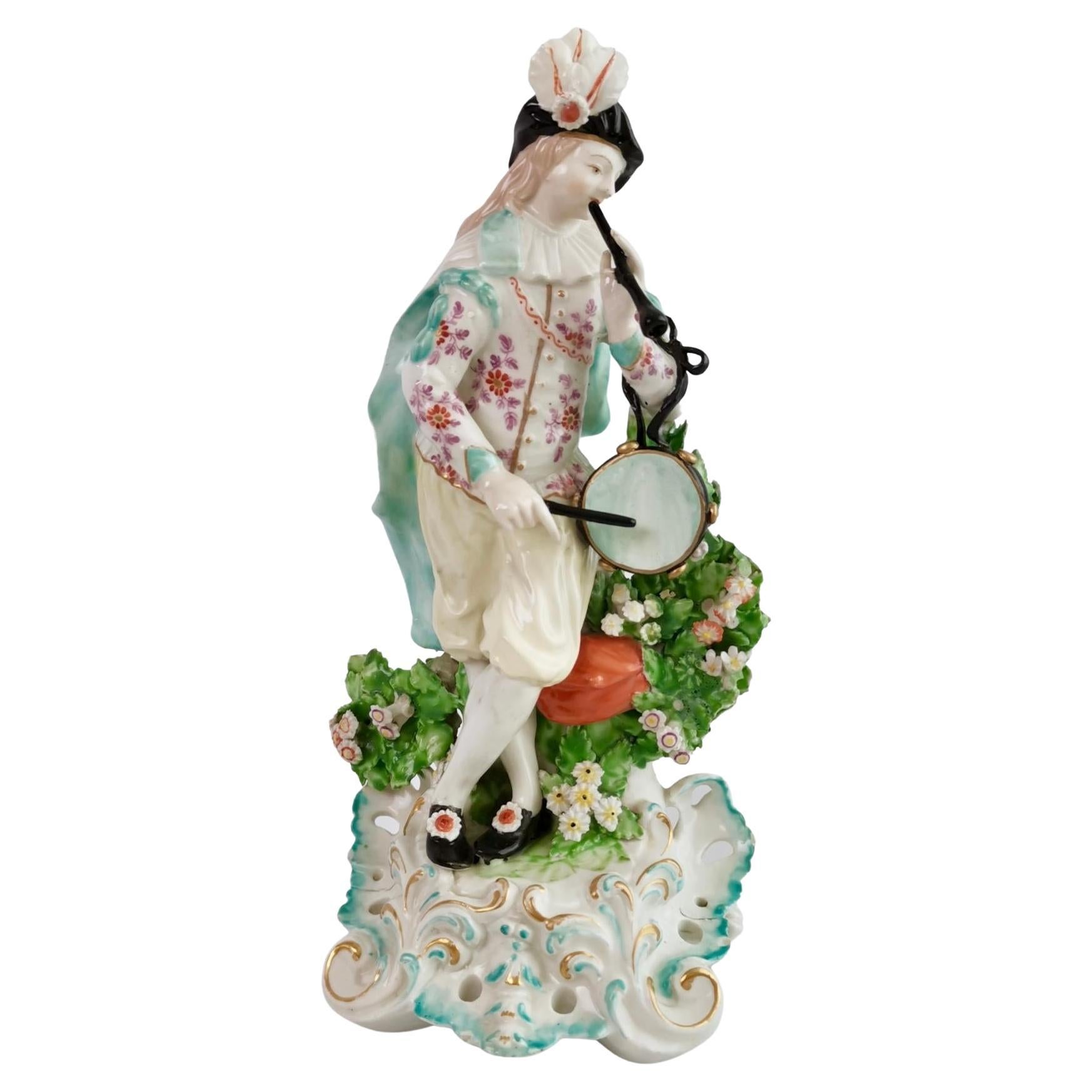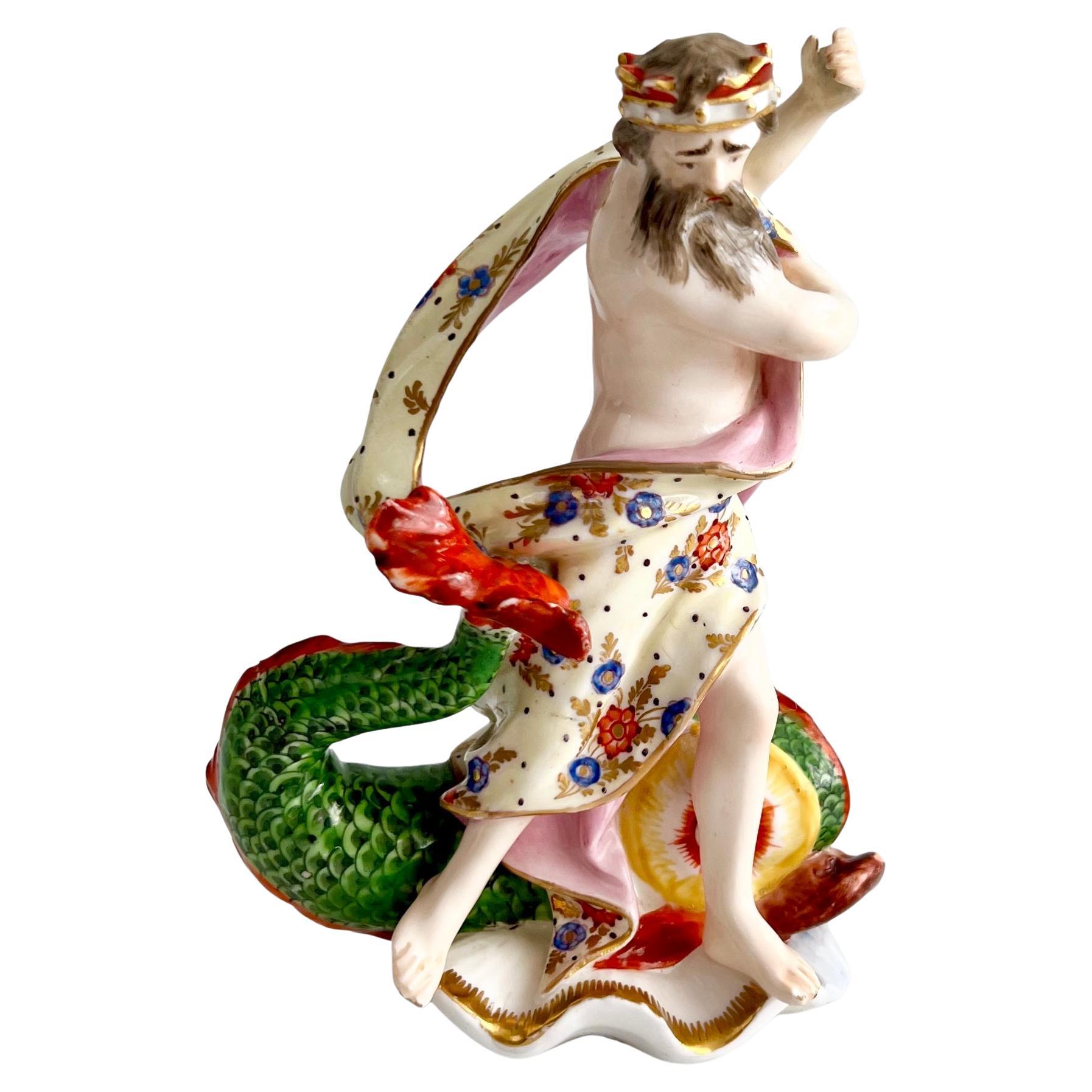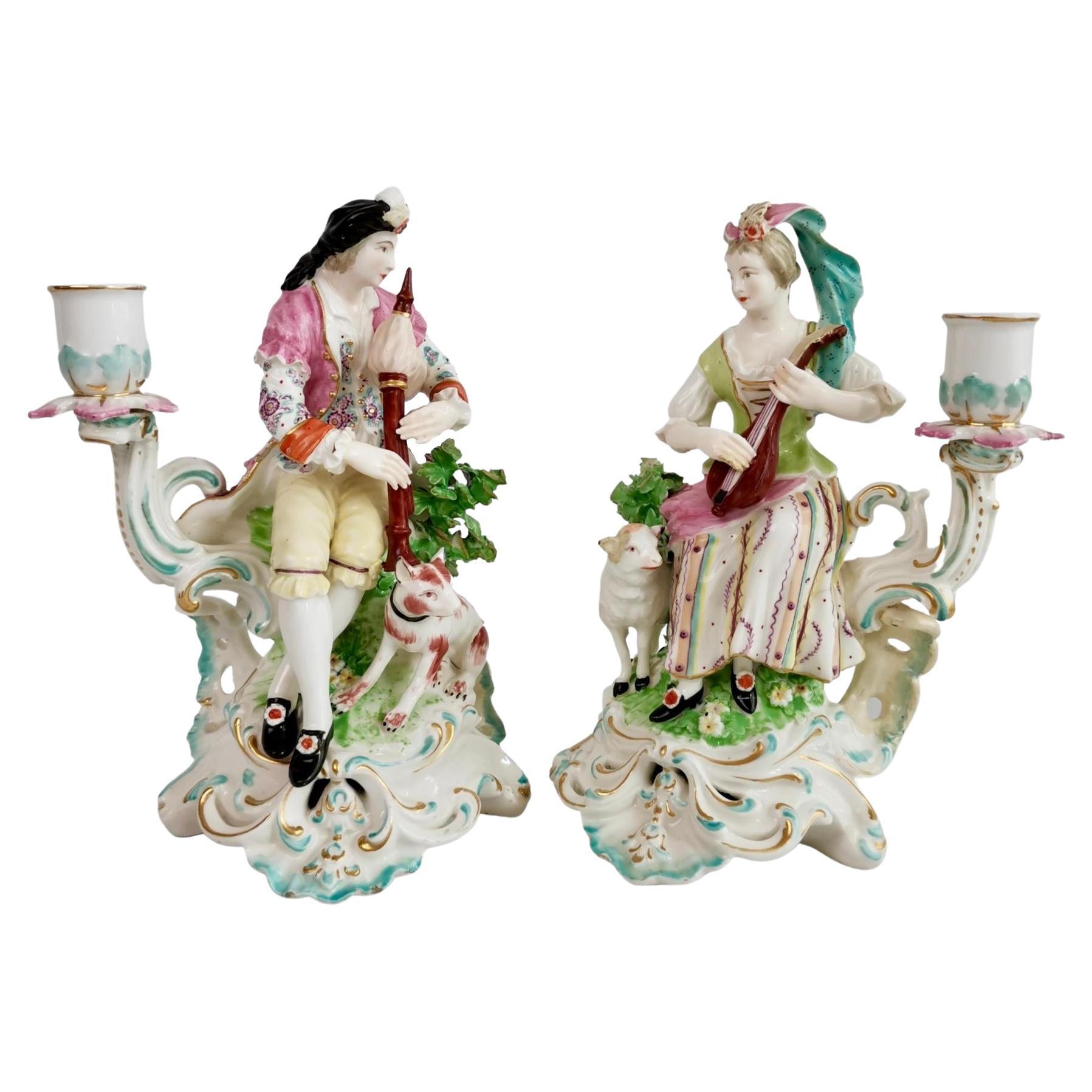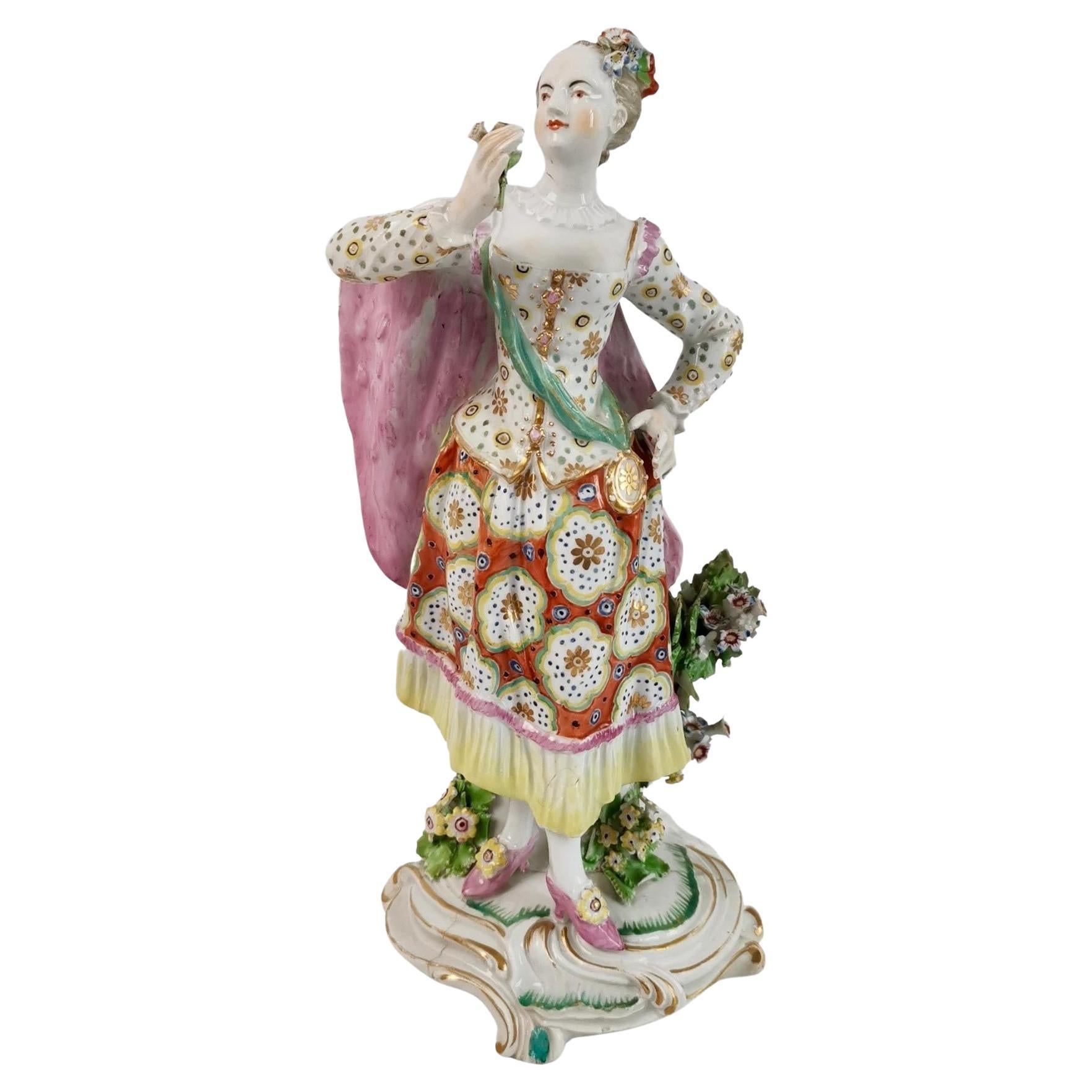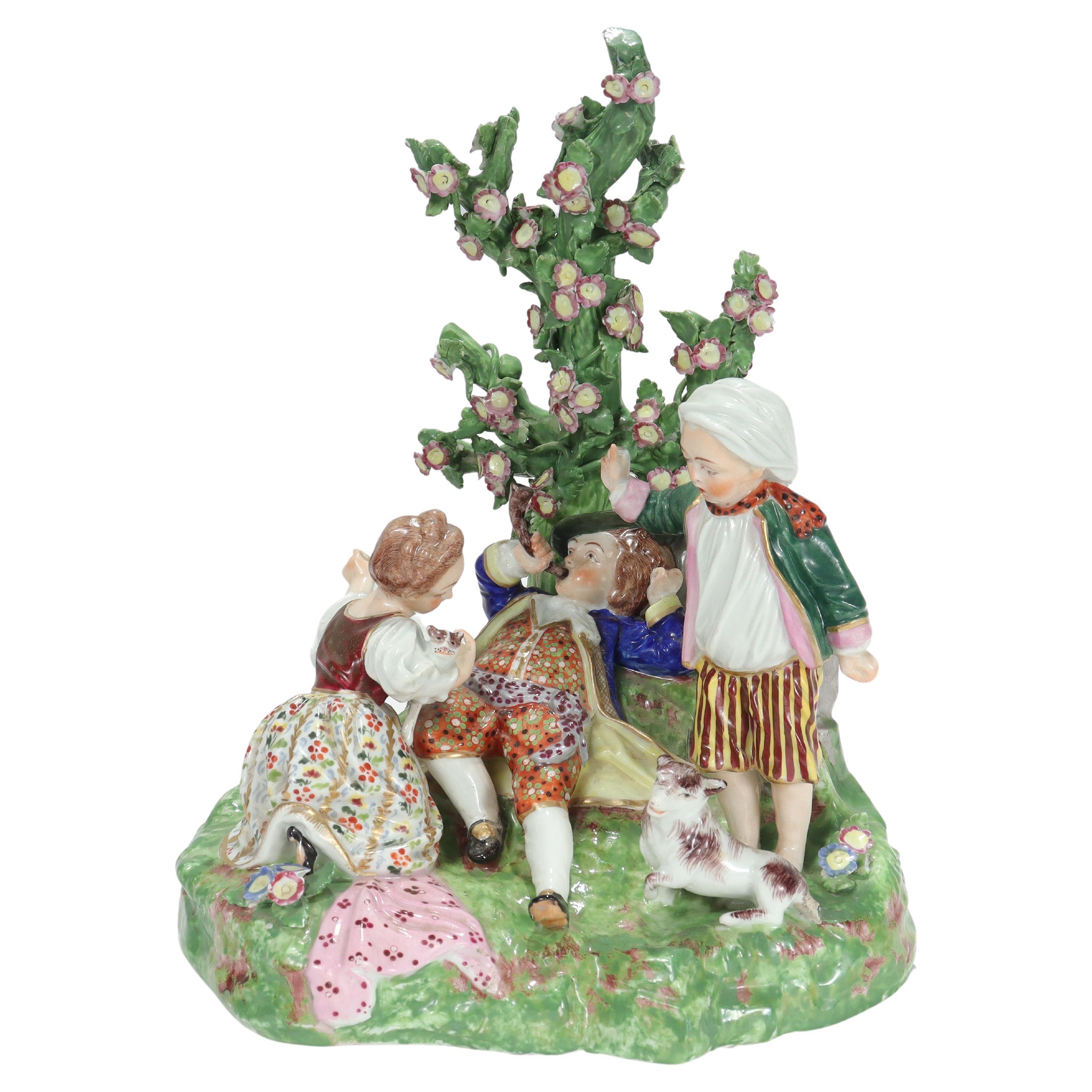Items Similar to Derby Figure of Shepherdess with Garlanded Lamb, ca 1760
Want more images or videos?
Request additional images or videos from the seller
1 of 15
Derby Figure of Shepherdess with Garlanded Lamb, ca 1760
About the Item
This is a charming Derby figure of a shepherdess with a garlanded lamb, made in or shortly after 1760. The figure is one half of a set called the "Garland Shepherds"; originally she had a male companion shepherd reciting a love letter to her. The item is incised at the bottom with an "N" and has three patch marks. It has beautifully fresh and light paintwork.
The Derby Porcelain factory has its roots in the late 1740s, when Andrew Planché, a Walloon Huguenot refugee, started making simple porcelain toys shaped like animals in his back yard. In 1756 Staffordshire enameller William Duesbury and banker John Heath started a new porcelain factory with Planché and this was to grow out to the largest factory of its time, buying up the bankrupted Chelsea and Bow factories, as well as the stock of several other workshops including that of James Giles. The combination of various traditions, porcelain making skills and sophisticated clients enabled Duesbury to create one of the best porcelain factories of the 18th and 19th Centuries, which after many ups and downs is still operative today.
Derby started making this figure (and her companion) in about 1860. It is not known what the origin is, but it is assumed that it might have been a French engraving after Boucher. This is the first version of several Derby made, with relatively simple clothes painted in very fresh colours, and stood on a lightly Rococo-scrolled ground.
These figures were used to adorn the dinner table when dessert was served; groups of figures served to express something about the host, the guests, or to direct the conversation. One popular topic was an array of romantic rural characters, and this shepherdess is from one such series. A beautiful young shepherdess stands on a Rococo scroll, slightly stooping down to a lamb that is stood up to her in loving embrace, a flower garland around its neck. The figure looks like it previously had a shield of bocage behind its back, but this has either never been attached or it disappeared with the breaking point neatly painted and glazed over.
The figure has an incised "N" at the bottom, as well as three stilt marks from firing. There also is an incised "2", which is probably the number of this figure on a purchase order of many.
CONDITION REPORT: The figure is in beautiful condition with no significant damage, wear or repairs. Presumably, a bocage shield behind the back is broken off, or perhaps it was never added. A few bocage leaves are broken off and the breaking point of the missing bocage was neatly painted and glazed over. There is some kiln dust on the base under the legs of the lamb; this would have happened during the firing process. There are some very light repairs to the arms and hands of the shepherdess. There is a firing crack in the back of the bocage, which is also from production. The colours are very fresh and there is no wear.
Antique British porcelain is never perfect. Kilns were fired on coal in the 1800s, and this meant that china from that period can have some firing specks from flying particles. British makers were also known for their experimentation, and sometimes this resulted in technically imperfect results. Due to the shrinkage in the kiln, items can have small firing lines or develop crazing over time, which should not be seen as damage but as an imperfection of the maker's recipes, probably unknown at the time of making. Items have often been used for many years and can have normal signs of wear, and gilt can have signs of slight disintegration even if never handled. I will reflect any damage, repairs, obvious stress marks, crazing or heavy wear in the item description but some minor scratches, nicks, stains and gilt disintegration can be normal for vintage items and need to be taken into account.
There is widespread confusion on the internet about the difference between chips and nicks, or hairlines and cracks. I will reflect any damage as truthfully as I can, i.e. a nick is a tiny bit of damage smaller than 1mm and a chip is something you can easily see with the eye; a glazing line is a break in the glazing only; hairline is extremely tight and/or superficial and not picked up by the finger; and a crack is obvious both to the eye and the finger.
DIMENSIONS: Height 19cm (7.5").
- Creator:Derby (Maker)
- Dimensions:Height: 7.5 in (19.05 cm)Width: 3 in (7.62 cm)Depth: 3 in (7.62 cm)
- Style:Rococo (Of the Period)
- Materials and Techniques:
- Place of Origin:
- Period:1760-1769
- Date of Manufacture:ca 1760
- Condition:Repaired: very light professional repairs to the hands and arms. Wear consistent with age and use. Minor losses. In excellent condition with minor losses to foliage, very minor professional repair, very fresh colours.
- Seller Location:London, GB
- Reference Number:
About the Seller
5.0
Platinum Seller
These expertly vetted sellers are 1stDibs' most experienced sellers and are rated highest by our customers.
Established in 2016
1stDibs seller since 2019
208 sales on 1stDibs
Typical response time: 1 hour
- ShippingRetrieving quote...Ships From: London, United Kingdom
- Return PolicyA return for this item may be initiated within 14 days of delivery.
More From This SellerView All
- Derby Porcelain Figure of Musician with Flageolet and Tabor, Rococo, Ca 1765By DerbyLocated in London, GBThis is a beautiful porcelain figure of a musician with a flageolet and tabor (fluit and drum), made by Derby around 1765, which was the Rococo era. The figure is one half of a pair ...Category
Antique 1760s English Rococo Figurative Sculptures
MaterialsPorcelain
- Derby Porcelain Figure of Neptune and Dolphin on a Shell, ca 1785By DerbyLocated in London, GBThis is a stunning porcelain figure of Neptune with a dolphin standing on a sea shell, made by Derby around the year 1785. The figure is in beautiful original condition. We have one other Neptune figure from 1765, please see separate listing. The Derby Porcelain factory has its roots in the late 1740s, when Andrew Planché, a Walloon Huguenot refugee, started making simple porcelain toys shaped like animals in his back yard. In 1756 Staffordshire enameller...Category
Antique 1780s English Rococo Figurative Sculptures
MaterialsPorcelain
- Derby Pair of Candle Stick Figures, Bagpiper and Lady with Lute, Rococo, Ca 1765By DerbyLocated in London, GBThis is a beautiful pair of Derby porcelain candlestick figures of a bagpiper and a lady with lute, made between 1759 and 1769, which was the Rococo era. The pair is one of Derby's f...Category
Antique 1760s English Rococo Figurative Sculptures
MaterialsPorcelain
- Derby Porcelain Figure of Female Ranelagh Dancer, Rococo 1759-1769By DerbyLocated in London, GBThis is a sublimely made porcelain figure of the female "Ranelagh Dancer", made by Derby between 1759 and 1769, which was the Rococo era. The figure would originally have had a male ...Category
Antique 1760s English Rococo Figurative Sculptures
MaterialsPorcelain
- Bloor Derby Pair of Porcelain Figures, Stag and Doe, circa 1765-1820By Derby, Bloor DerbyLocated in London, GBThis is a very charming pair of porcelain figures of a stag and a doe, probably cast by Derby in about 1760 and decorated by Bloor Derby in 1820. The figures are a simple white porce...Category
Antique 1760s English Rococo Figurative Sculptures
MaterialsPorcelain
- Bow Porcelain Figure of Juno with Eagle 'Jupiter', Rococo Ca 1765By Bow PorcelainLocated in London, GBThis is a very rare and impressive large figure of Juno with an eagle, made by the Bow Porcelain factory in about 1765. This figure formed part of a series of the Four Elements, with...Category
Antique 1760s English Rococo Figurative Sculptures
MaterialsPorcelain
You May Also Like
- Seal, I Still Hope, Derby Porcelain Works, circa 1760By DerbyLocated in Melbourne, VictoriaA delightul porcelain seal, depicting a young lady, seated on a mound. It is painted with the motto J'ESPRE ENCORE, or I Still Hope. No doubt this was intended as a gift, to be given...Category
Antique Late 18th Century English Neoclassical Porcelain
MaterialsPorcelain
- Antique Derby English Porcelain Figure of Children in a GardenBy Meissen Porcelain, Derby, Bow PorcelainLocated in Philadelphia, PAA fine antique English porcelain figurine. By the Derby Porcelain Works. With 3 children in a garden accompanied by a lamb and a cat. The boy is reclining against a tall flowery plant and holding a pipe or scoop in his hand. Simply a great antique Derby figurine...Category
Antique 19th Century English Victorian Porcelain
MaterialsPorcelain
- Large 18th-Century Derby Porcelain Figure Emblematic of AfricaBy DerbyLocated in Downingtown, PALarge Derby Porcelain Figure of Africa, From a series known as the "Four Quarters". Circa 1765 The large figure, emblematic of Africa, is depic...Category
Antique Mid-18th Century Georgian Figurative Sculptures
MaterialsPorcelain
- Bloor Derby Porcelain Figure of a Seated Turk C.1820By Bloor DerbyLocated in Exeter, GBA very fine Bloor Derby porcelain figure of a seated Turk, sitting cross-legged in traditional costume, a hookah at his side, on a cushion base ...Category
Antique 19th Century Porcelain
MaterialsPorcelain
- Pair of Derby Mansion House Dwarf Figures porcelain, 19th CenturyBy DerbyLocated in Lincoln, LincolnshireThese are a pair of Derby Porcelain "Mansion House" Dwarfs or "Grotesque Punches" both with incised model numbers and dating to the 19th century. Both figures, male and female are...Category
Antique 19th Century English Georgian Porcelain
MaterialsPorcelain
- Pair of 19th Century English Derby Fruit Coolers with Lids & Liners, ca. 1815By DerbyLocated in Atlanta, GAPair of 19th century English Derby Fruit Coolers with Lids & Liners, ca. 1815.Category
Antique Early 19th Century English Neoclassical Urns
MaterialsPorcelain
Recently Viewed
View AllMore Ways To Browse
Antique Furniture Ca
Rococo Scroll
Garland Used Office Furniture
Garland Flower
Antique Garlands
The Derby
Antique Lamb
Figure Ground
Antique Derby
Chinese Antique British Furniture
Garland Light
French Figure 18th
Antique Furniture Derby
Male Figure Study Sculpture
Rococo Furniture From England
Garland Enamel
Staffordshire Figure
Antique Staffordshire Figure
